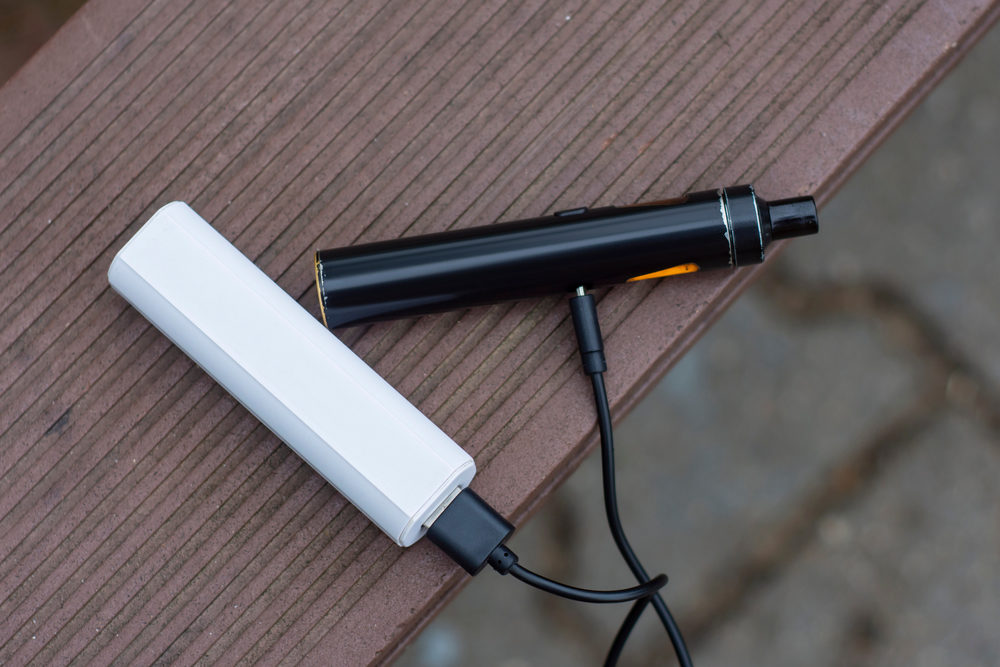
Lithium-ion batteries are light, rechargeable, and can be sized to fit nearly any device. Without them, it would be impossible to carry around the smartphones we rely on. Lithium batteries power a variety of devices besides our phones, including laptops, electric cars, and e-cigarettes (also known as vape pens).
Inside every lithium battery is a positively and negatively charged electrode separated by a thin sheet of plastic. When the battery is charging, the lithium ions are pushed from the positive electrode through the plastic separator into the negative electrode. The opposite happens when it’s not charging, powering your device until the saved electricity runs out. Normally, the electricity is released in a trickle over several hours. Unfortunately, sometimes the plastic separator between the electrodes fails, allowing them to touch and start to overheat. All the electricity is released at once. This can lead to the battery exploding.
Separators can fail due to manufacturing or design defects, faulty chargers, and external factors such as being left too close to a heat source or damaging the battery (like dropping your phone). Whatever the cause, lithium battery explosions have been on the rise in recent years – especially those found in vape pens.
A 2017 U.S. Fire Administration report stated that “the shape and construction of electronic cigarettes can make them [more likely than other products with lithium-ion batteries] behave like ‘flaming rockets’ when a battery fails.”
A 2018 study found 2,035 visits to U.S. hospital emergency rooms for vape pen burn and explosion injuries from 2015-2017, an average of almost two visits every day. And vape pen usage, particularly among teenagers, is steadily increasing.
According to the FDA, more than two million American teenagers, including more than 11% of high school students and nearly 3% of middle school students, currently use e-cigarettes. The dangers of nicotine addiction aside, surgeons at nine U.S. hospitals reported that exploding vape pens severely injured 15 teenagers from January 2016-December 2019. Most needed surgery.
Burns are the most common vape pen explosion injury, usually around the face or thighs (from using the pen or keeping it in a pocket). Others include lacerations, scarring, fractures, lost or cracked teeth, blindness, and soft tissue damage. A Nevada teenager lost several teeth and shattered his jaw in 2019 when his brand-new e-cigarette exploded inside his mouth. A 38-year-old Florida man became the first U.S. vape pen death in 2018 when his device exploded, penetrating his brain and catching his home on fire.
Lithium batteries often exhibit warning signs before they catch fire, including feeling hot to the touch, swelling, cracking, or smelling bad. There are several things you can do to prevent an explosion:
- Always follow manufacturer instructions for storage, charging, and maintenance
- Use device components designed specifically for your device
- Don’t charge on or near flammable materials
- Unplug your device when it’s fully charged
- Store batteries in a cool, dry place
Victims of vape pen explosions have started to file product liability lawsuits against manufacturers of faulty lithium battery devices. If an exploding battery has injured you or a loved one, you deserve to hold negligent manufacturers responsible for your medical bills, pain and suffering, and other damages.
The personal injury lawyers at Curcio Law can help determine the best legal options for an exploding lithium battery case. Please call or text us anytime at 703-836-3366 or contact us online for a free case review.

Rakin Hamad joined Curcio Law as an associate in August 2018 after graduating from George Mason Law School. During law school, Rakin demonstrated his dedication to client advocacy and was a member of the trial advocacy association, the pro bono society, and the George Mason Law Review. His approach to the law mirrors the firm’s philosophy of treating each client with commitment, compassion and character. Contact Rakin at rhamad@curciolaw.com.















Comments for this article are closed.